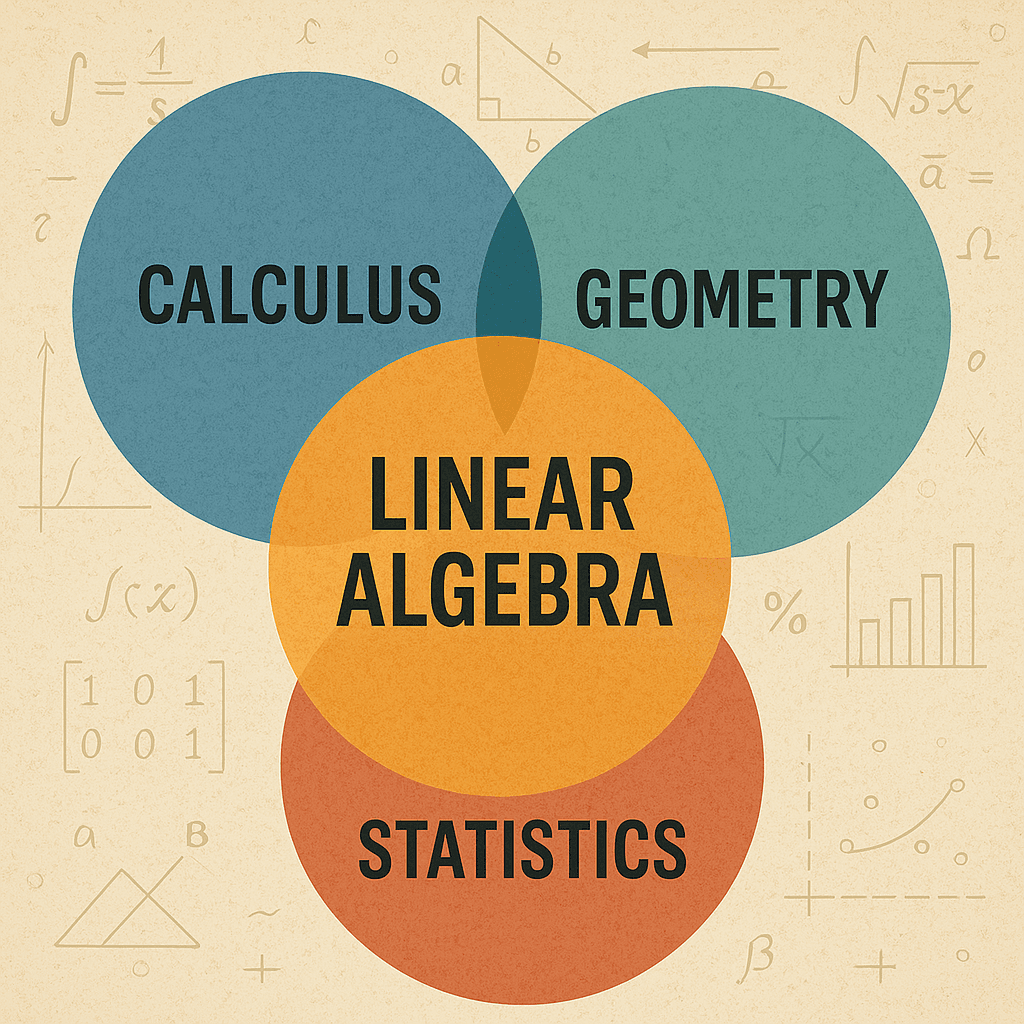The power of Linear Algebra: Why Linear Algebra Is Important for Machine Learning
If you're starting to learn machine learning, one of the most important math topics to understand is linear algebra. It's not just for mathematicians—it’s a powerful tool that helps you work with data, build models, and understand how algorithms work. In this article, we’ll explain what linear algebra is, how it connects to other areas of math, and why it’s so important in machine learning. Don’t worry—we’ll keep the language simple and the explanations clear.
What Is Linear Algebra?
Linear algebra is a part of math that works with vectors and matrices. A vector is just a list of numbers. For example, [2, 5, 7] is a vector with three numbers. A matrix is like a table or grid of numbers—rows and columns that you can use to organize data.
Linear algebra helps us do things like:
Solve systems of equations
Transform data (like rotating or scaling it)
Understand relationships between different variables
You’ll see vectors and matrices everywhere in machine learning—data, models, and even the algorithms themselves all use them.
How Linear Algebra Connects to Other Math Areas

1. Calculus and Linear Algebra
Calculus is about change—how things grow or shrink. In machine learning, we often want to find the best settings for a model by using gradients (from calculus) to improve results. Linear algebra helps us work with these gradients when we have many variables at once.
2. Geometry and Linear Algebra
Linear algebra gives us tools to describe and work with shapes, lines, and rotations in space. For example, we can use a matrix to rotate an image or a point in 3D space. In machine learning, this helps with visualizing and transforming data.
3. Statistics and Linear Algebra
Many ideas in statistics use linear algebra. For example:
Linear regression finds a line (or surface) that best fits data points.
PCA (Principal Component Analysis) finds patterns in data and helps reduce the number of variables, making analysis easier.
All of this is done using vectors and matrices.
A Common Language for Machine Learning
One of the biggest reasons to learn linear algebra is that it helps you understand and talk about machine learning more clearly. Researchers and books often explain ideas using vectors and matrices. If you know this language, you can read and learn faster.
Also, most machine learning code uses matrix operations. Libraries like NumPy, PyTorch, and TensorFlow are built to work with vectors and matrices. Learning linear algebra helps you write faster and better code.
Conclusion
Linear algebra is everywhere in machine learning. You don’t need to be a math expert to learn it. Just start with the basics—what vectors and matrices are, how to add and multiply them, and how they apply to machine learning problems.
Once you understand linear algebra, you’ll find that a lot of machine learning ideas become much easier to follow.